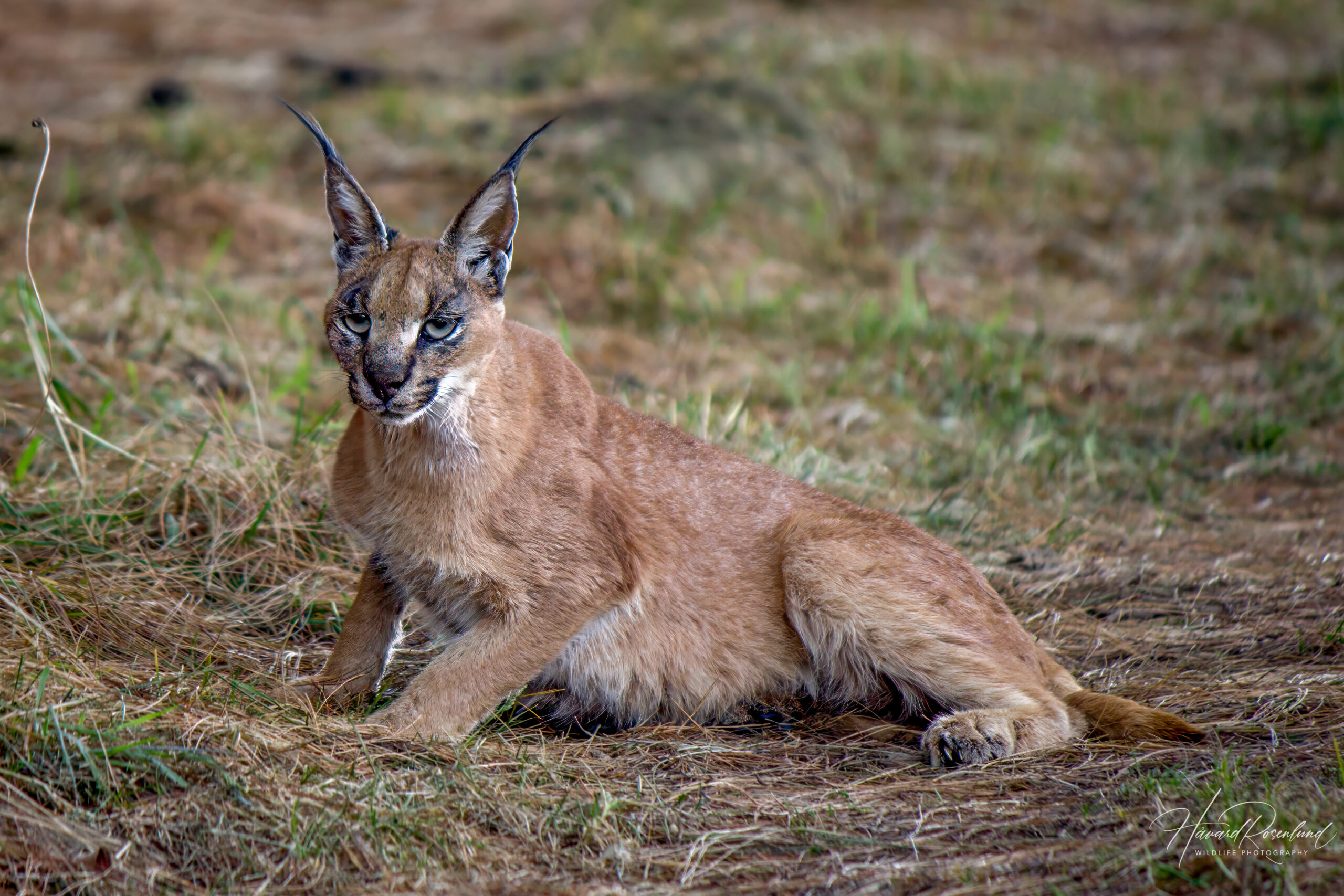Description
The caracal (Caracal caracal), known for its distinctive tufted ears, is a medium-sized wild cat native to Africa, the Middle East, Central Asia, and India. It is also known as desert lynx or Persian lynx. The name ‘caracal’ comes from the Turkish word ‘karakulak’, meaning ‘black ear’. Its coat ranges from a rich golden-brown to a sandy color, providing excellent camouflage in its natural habitat. The underbelly and the insides of the legs are usually lighter. Adult caracals typically weigh between 12-18 kg (26-40 lb), with a body length of about 60-90 cm (2-3 ft) and a tail length of 20-30 cm (8-12 in). Males are typically larger and more muscular than females. The caracal shows some variation in size and fur thickness across its range, which can be attributed to environmental adaptations. For example, caracals from colder regions have a denser fur compared to those from arid areas.
Habitat
Caracals are versatile in their habitat preferences. They are primarily found in drier savanna and woodland regions but can adapt to a variety of environmental conditions, from semi-desert areas to mountainous regions with seasonal snowfall. These cats have a remarkable ability to go without water for long periods, obtaining moisture from their prey. Despite being adapted to arid environments, they are not commonly found in true deserts. Their adaptability extends to human-altered landscapes, where they can occasionally be spotted in agricultural areas or near human settlements, searching for food.
Diet & Hunting
Caracals are skilled hunters, known for their agility and ability to leap high into the air to catch birds mid-flight. They are primarily nocturnal, hunting at night using their excellent vision and hearing. Their diet mainly consists of small mammals like hares, rodents, small antelopes, and occasionally reptiles and insects. Caracals can take down prey up to three times their size, making them formidable predators in their ecosystem. They are known to store larger kills to eat later, hiding them in bushes or under leaves.
Reproduction
Although they can live in pairs, caracals are typically solitary animals, coming together only when mating. When a female is in heat, she will scent mark and make loud calls to attract a male. They can mate throughout the year without a specific breeding season. Females give birth to a litter of 1-6 kittens after a gestation period of about 2-3 months. The mother often finds a secluded, safe place to give birth, such as in dense vegetation or rocky crevices. The kittens are born blind and are highly dependent on their mother for the first few weeks. The mother caracal is fiercely protective of her young, moving them to new hiding places regularly to avoid detection by predators. As the kittens grow, they are taught hunting skills, and by ten months, they start to separate from their mother to establish their own territories. The young caracals reach maturity at around 12 months for females and 14 months for males.
Status
The caracal faces threats from habitat loss and hunting. In some regions, they are hunted for their fur or perceived as a threat to livestock. Conservation efforts focus on habitat protection and reducing human-wildlife conflict. As it is a highly secretive and seldom seen animal, its current population size is unknown. Because of its extensive range and ability to adapt to many different environments, even close to human settlements, it is listed as least concern on the IUCN Red List.






